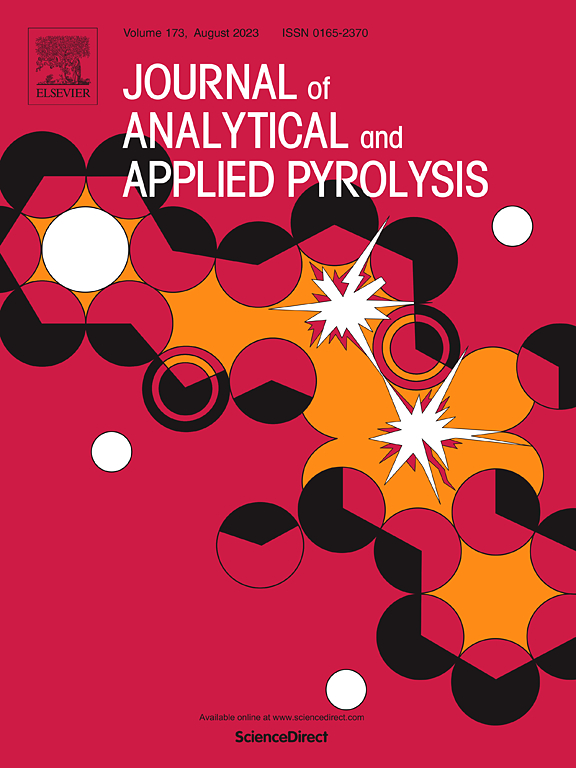Impact of CO2 on the pyrolysis of mixed polymer wastes into combustible fuel: A case study for footwear waste
IF 6.2
2区 化学
Q1 CHEMISTRY, ANALYTICAL
引用次数: 0
Abstract
Plastic waste is a promising resource for producing liquid fuels that can be integrated into existing hydrocarbon infrastructures. However, the heterogeneous nature of plastic-derived liquid fuels limits direct application in internal combustion engines, necessitating their refinement into a usable form. To address these issues, this study explored the enhancement of combustible gaseous fuels derived from plastic waste, footwear waste, as a viable alternative. This approach involves the introduction of carbon dioxide as a reactive feedstock during the pyrolysis process. Analytical techniques were employed to precisely determine the types and compositions of four polymers present in footwear waste. The compositional matrices of the primary pyrogenic products were also identified. However, incorporating carbon dioxide into pyrolysis leads to its interaction with volatile compounds, converting them into lighter gaseous products, particularly carbon monoxide. The homogeneous reactivity of carbon dioxide was further enhanced by the application of heat and a nickel-based catalyst. The gaseous product yield from catalytic pyrolysis in the presence of carbon dioxide increased proportionally with the test temperature. Specifically, the use of carbon dioxide led to a 1.92-fold increase in gaseous product yield at 700 ˚C, in reference to the results from nitrogen. This study demonstrates a technical advancement in pyrolytic valorisation of footwear waste by incorporating carbon dioxide and provides a detailed investigation into its mechanical role in maximising the production of combustible gaseous fuels.
二氧化碳对将混合聚合物废物热解为可燃燃料的影响:鞋类废物案例研究
塑料废弃物是生产液体燃料的一种前景广阔的资源,可以整合到现有的碳氢化合物基础设施中。然而,塑料衍生液体燃料的异质性限制了其在内燃机中的直接应用,因此必须将其提炼成可用的形式。为解决这些问题,本研究探讨了如何提高从塑料废弃物(鞋类废弃物)中提取的可燃气体燃料,将其作为一种可行的替代品。这种方法包括在热解过程中引入二氧化碳作为反应原料。利用分析技术精确测定了鞋类废物中四种聚合物的类型和成分。此外,还确定了主要热源产品的成分基质。然而,在热解过程中加入二氧化碳会导致二氧化碳与挥发性化合物相互作用,将其转化为较轻的气态产物,特别是一氧化碳。通过加热和使用镍基催化剂,二氧化碳的均相反应性进一步增强。在有二氧化碳存在的情况下,催化热解产生的气态产物产量随试验温度的升高而成正比增加。具体来说,在 700 ˚C 时,使用二氧化碳可使气态产物产量比使用氮气时增加 1.92 倍。这项研究表明,通过加入二氧化碳,鞋类废弃物热解增值技术取得了进步,并详细研究了二氧化碳在最大限度地生产可燃气体燃料方面的机械作用。
本文章由计算机程序翻译,如有差异,请以英文原文为准。
求助全文
约1分钟内获得全文
求助全文
来源期刊
CiteScore
9.10
自引率
11.70%
发文量
340
审稿时长
44 days
期刊介绍:
The Journal of Analytical and Applied Pyrolysis (JAAP) is devoted to the publication of papers dealing with innovative applications of pyrolysis processes, the characterization of products related to pyrolysis reactions, and investigations of reaction mechanism. To be considered by JAAP, a manuscript should present significant progress in these topics. The novelty must be satisfactorily argued in the cover letter. A manuscript with a cover letter to the editor not addressing the novelty is likely to be rejected without review.

 求助内容:
求助内容: 应助结果提醒方式:
应助结果提醒方式:


